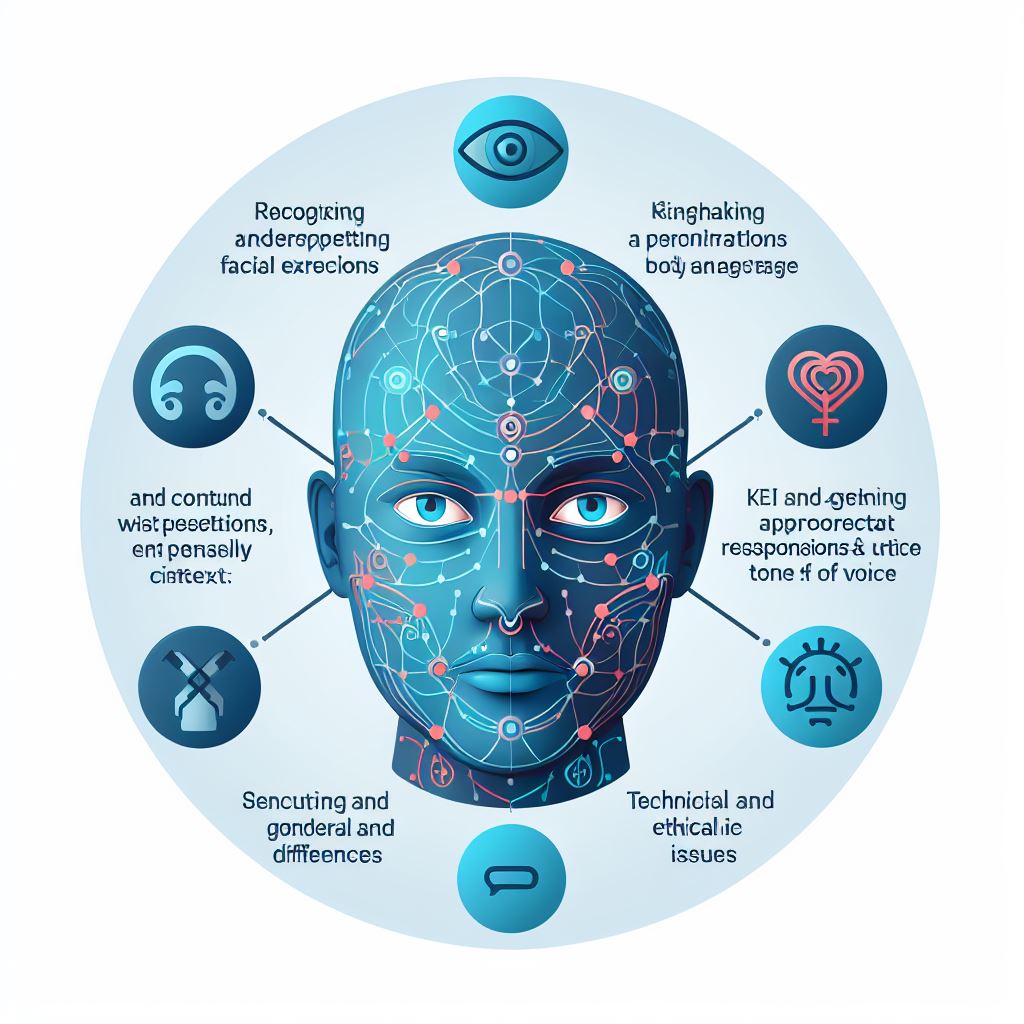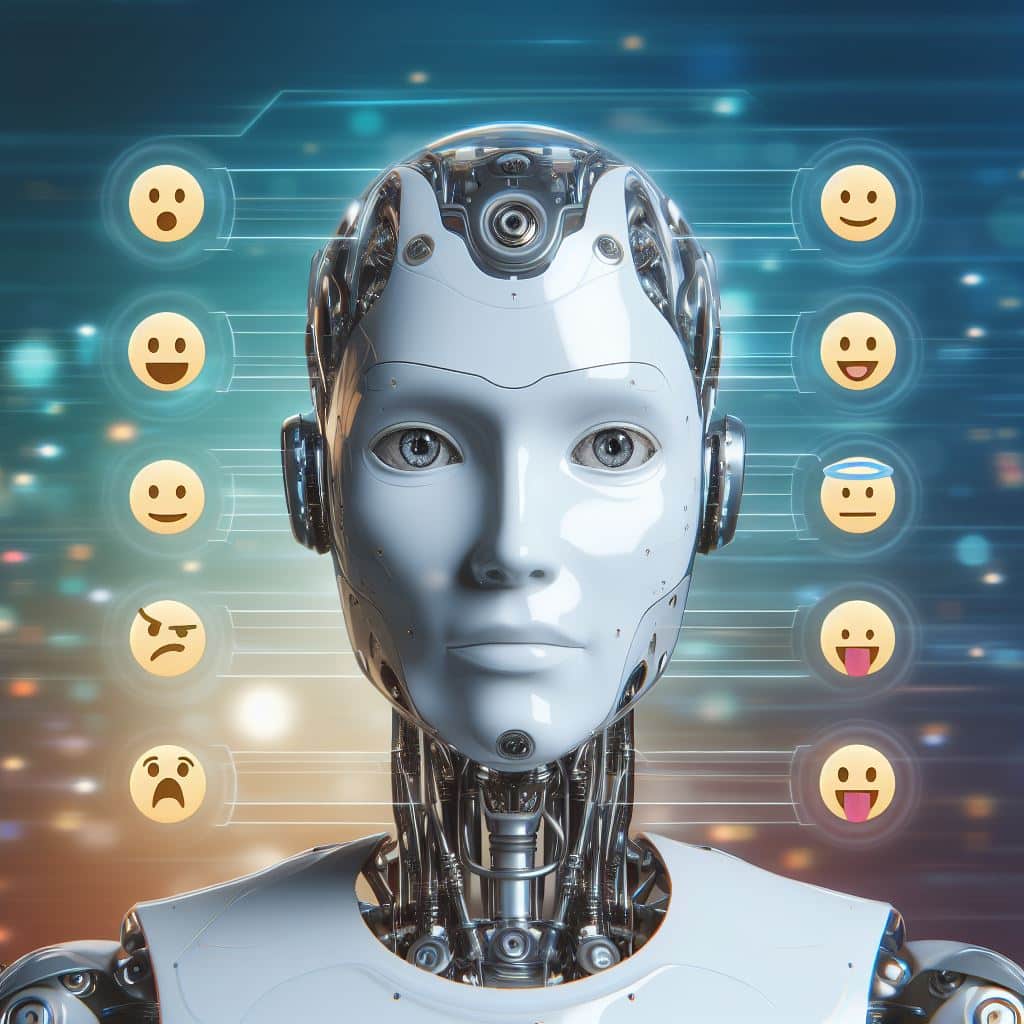Emotions constitute a profoundly human experience. They influence our behaviors, relationships, and well-being in countless subtle ways. As artificial intelligence advances, it raises a fundamental question – could machines ever truly understand emotions as humans do? While AI has made strides in processing emotional data, full emotional comprehension may remain out of reach. Let’s dive deeper into the nuances.
Current Capabilities in Emotional AI
In limited contexts, contemporary AI exhibits some ability to register human emotions. Applications include:
- Sentiment analysis – Categorizing text or vocal tone as positive, negative or neutral.
- Facial recognition – Reading emotions like happiness, sadness, anger based on facial expressions.
- Biosensor data – Using wearables to detect signals related to mood like elevated heart rate.
- Dialogue systems – Chatbots designed to appropriately respond conversationally to different emotional states.
- Therapeutic robots – Robotic pets simulating companion animal emotional bonding and comfort.
- Customized recommendations – Media or shopping suggestions based on detected user moods.
While impressive, these demonstrate only surface-level emotional awareness lacking deeper meaning and context. Beyond straightforward classifications, today’s algorithms struggle to reason about emotions in a truly humanistic way.
The Subtleties and Nuances of Human Emotion
To appreciate emotions, AI must grasp intricacies including:
- Context sensitivity – How scenarios shape emotions elicited.
- Evolution over time – Changing emotional dynamics as relationships and situations develop.
- Cultural variations – Differences in emotional expression between societies.
- Individual uniqueness – Idiosyncrasies in how specific people experience emotions.
- Inner complexities – Contradictions, ambivalence, overlapping emotions that humans intuit.
- Metacognition – Humans thinking about their own emotions abstractly.
- Conscious “feeling” – Subjective personal experience of emotions.
- Creativity in expression – Human ingenuity in conveying emotions through art, language and symbols.
- Origins in human biology – Ways emotions stem from biochemical processes.
Mastering even basic emotional awareness requires recognizing these subtleties that often elude current AI.
Key Challenges for Emotional AI
Several formidable obstacles stand in the way of algorithms attaining human-like emotional intelligence:
Data Limitations
Training emotion-aware AI requires diverse, well-labeled datasets. But capturing the full complexity of emotional data is near impossible. Limitations of images, text, or audio for conveying emotions intrinsically constrain algorithms.
Individual Differences
Humans have unique emotional wiring shaped by genetics, upbringing, and life experiences. We do not conform to simplistic statistical averages. But machine learning relies on finding generalizable patterns, missing outliers and one-of-a-kind quirks essential to humanity.
Clear Definitions Lacking
There remains much ambiguity on what constitutes an emotion or how to categorize them. With no definitive schema to train towards, achieving consensus on emo-tional AI goals is challenging.
Current Tools Insufficient
Sensors and behavioral data provide partial clues but cannot fully encapsulate underlying emotions. For example, two people shedding the same tears may be experiencing wholly different emotional states. More advanced tools are needed.
Innate Machine Limitations
Some argue that key emotional concepts like empathy, love, grief, hope and longing will forever lie beyond the grasp of software running on metal hardware, which lacks the intrinsic biological mechanisms from which human emotions arise. The electrical signals in silicon circuits are argued to be fundamentally void of emotion themselves.

Progress Required for Truly Emotional AI
For AI to approach human-level comprehension of emotions, some milestones required include:
- Sensing tools that capture fuller behavioral and physiological emotion data across diverse real-world contexts.
- Recognition of subtle facial/vocaltone emotional cues that humans implicitly register.
- Network architectures better mirroring the structure of biological neural emotion circuitry.
- Training data orders of magnitude larger and richer than current datasets.
- More benchmarking tests that evaluate nuanced emotional understanding vs. just classification accuracy.
- Development of generalizable computational emotion models, likely requiring new techniques.
-Checks against cultural and demographic biases that warp the perception of emotions.
- Incorporation of multiple data modes like language, music, visuals, physical sensations, etc. which together convey robust meaning.
- Strong collaboration between engineers, psychologists, neuroscientists, and other emotion experts to enable interdisciplinary breakthroughs.
Applications Enabled by Advances in Emotional AI
As progress is made, richer understanding of emotion could enable transformative applications:
Enhanced Human-AI Interaction
Algorithms that can read and appropriately respond to human emotions will enable more natural interface experiences that adapt dynamically based on the user’s state of mind.
Mental Health Support
AI with deeper emotional insight may supplement therapists and counselors in providing customized treatments for conditions like depression, anxiety, PTSD and more.
Education and Child Development
Emotion-aware AI could aid teachers in identifying student needs, personalizing curriculum based on emotional intelligence levels, and providing supplemental socio-emotional skill development.
Leadership Training
Algorithms that point out deficiencies in recognizing others’ emotional states could help managers be more empathetic and effective leaders.
Enriched Human Relationships
AI that models emotional give-and-take could provide guidance for improving interpersonal dynamics and social-emotional skills.
Entertainment Innovation
Games, shows, movies, books, and music that dynamically adapt to elicit targeted emotional reactions in audiences become possible.
Legal/Ethical Applications
AI judges, attorneys, regulators, and policymakers with emotional capability may prove better equipped to make wise decisions. However, dangers of manipulation exist.
The Essence of Emotions Eludes Machines
For all the potential breakthroughs, the most skeptical perspective sees emotions as an irreproducible phenomenon exclusive to minds occupying biological bodies. The sensory-chemical processes underlying feelings, the role of consciousness, and the continuity of emotions across the arc of life from birth to death all constitute mysteries that silicon-based machines will never fully experience themselves. These critics assert that at best, AI may achieve advanced behavioral mimicry of emotions without replicating their true essence. Per this view, we should not confuse data patterns with deeper meaning.

A Balanced Perspective
Where exactly the truth lies between the boldest AI aspirations and the wisest human cautions remains uncertain. A balanced perspective must acknowledge emotions as among the most profound and elusive of human qualities, while also recognizing computational capabilities still in infancy. For the foreseeable future, replicating the subtlety of minds shaped by a hundred thousand years of culture and biology seems unlikely. However, to arbitrarily declare the problem insoluble risks underestimating future ingenuity. The healthiest stance may be measured optimism – pursuing intriguing possibilities while checking unrealistic hype. With technological innovation and values alignment, we may discover new horizons that enrich how both humans and machines understand what most makes us human: the heart.
In summary, the complexity of hearts and minds likely implies emotional comprehension will long remain a distinctive capacity of humankind over artificial intelligence. But discounting future innovation risks short-sightedness. With prudent expectations and interdisciplinary collaboration, emotional AI promises to advance in intriguing ways, even if full human equivalence stays out of reach. Regardless, our common humanity obliges us to program emotional consideration and wisdom into the machines more and more shaping our world.

